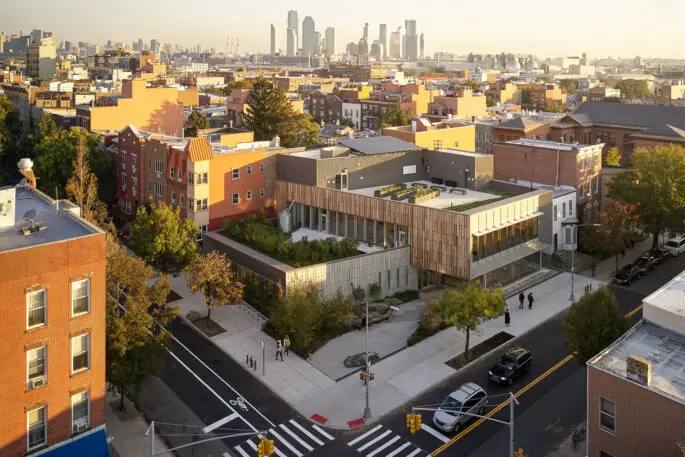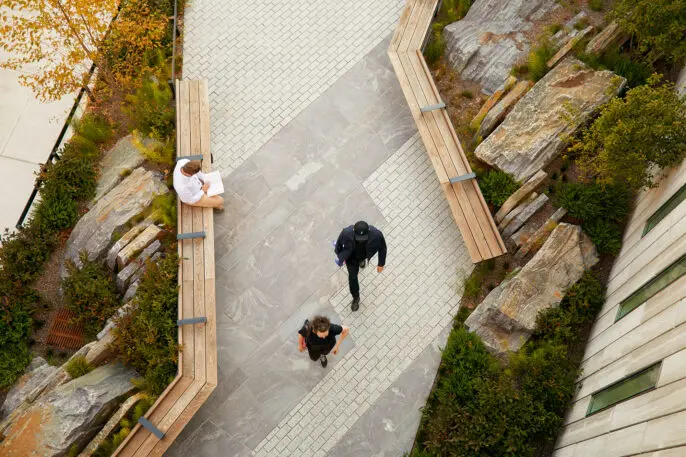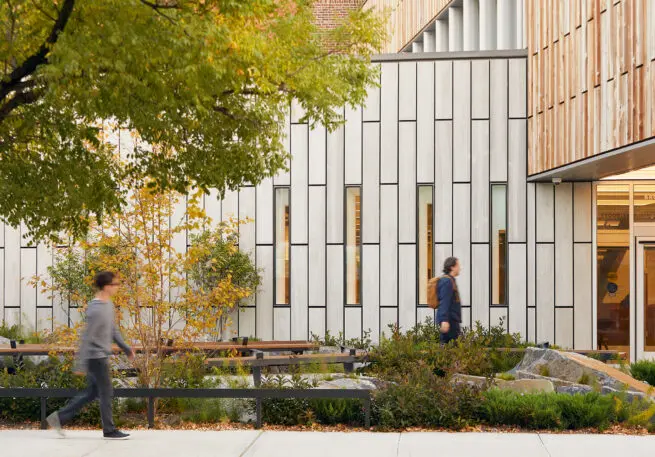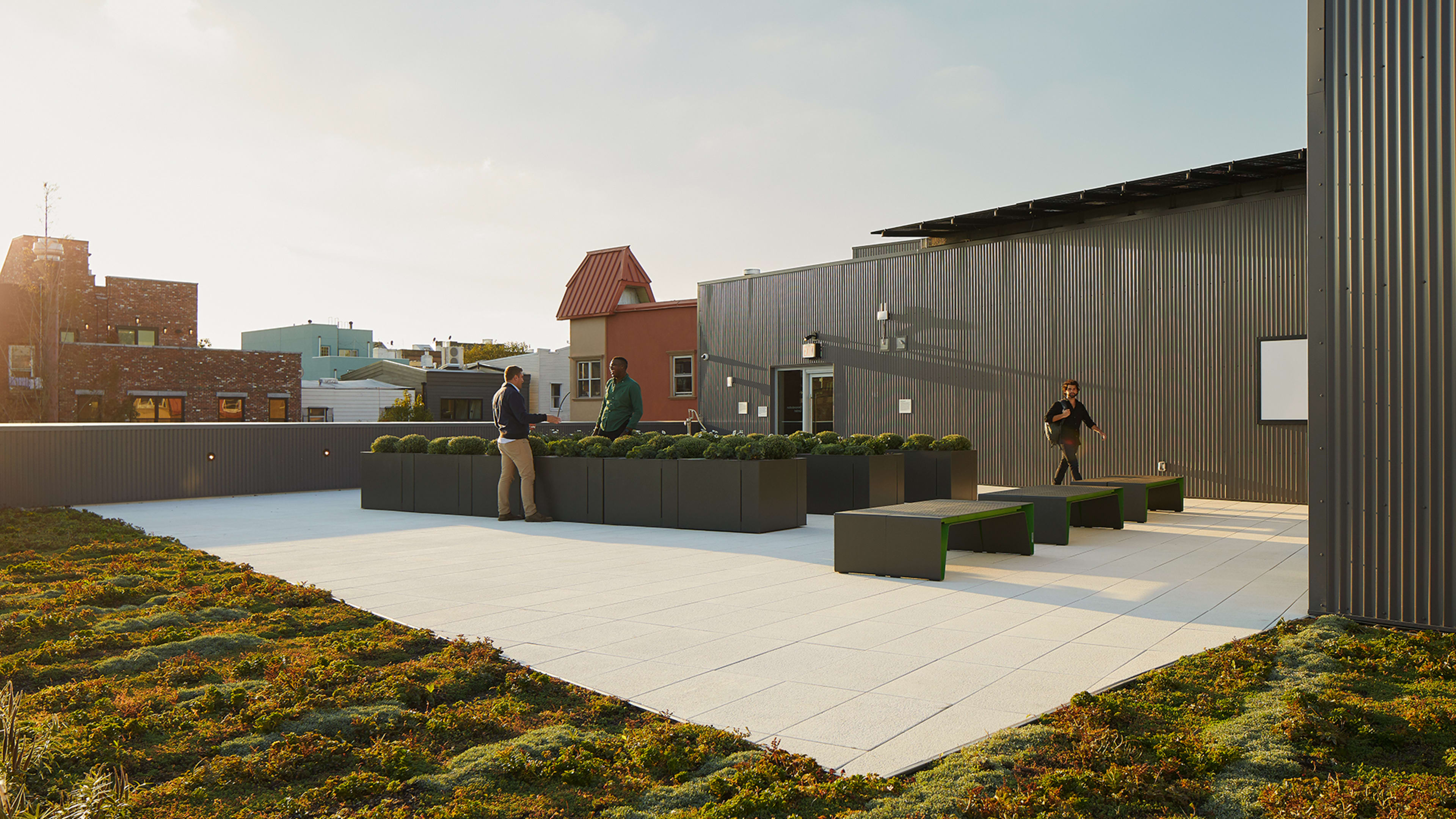I have spent a lot of time in libraries in my day. But not one like this.
That’s because New York City’s newest library, in the Greenpoint neighborhood of Brooklyn, doubles as an environmental education center. The building, designed by architecture firm Marble Fairbanks and landscape architecture firm Scape, is double the size of the previous branch, with major expansions and renovations of indoor and outdoor spaces. Everything about it is designed to teach visitors about sustainability, from a rooftop garden to a rainwater runoff system. “The Greenpoint branch is a case-in-point that our social infrastructure can do double duty as a site for both learning and doing,” says Gena Wirth, design principal at Scape. “The library is a refuge for readers, but also a place for patrons to get their hands dirty and understand the less tangible aspects of our fragile earth systems—which need our attention more than ever.”

The Greenpoint Library and Environmental Education Center encompasses more than 15,000 square feet of sunny interiors and greenery-filled exteriors partially powered by solar panels. It’s consistent with biophilic design, a design philosophy that brings natural elements to interiors, and is often used in office spaces, residential spaces, and hospitals.

Meeting rooms have accent walls that are made from the wood of native trees, and first floor windows are placed to let light shine directly through them during solstices and equinoxes. Exposed bedrock in front of the library evokes the Laurentide Ice Sheet, which covered Greenpoint 18,000 years ago, teaching kids local geological history en plein air.

Recognize your brand’s excellence by applying to this year’s Brands That Matter Awards before the early-rate deadline, May 3.
